The Dynamics of the Uprising in Syria
Oct 19 2011 by Hassan Abbas
http://www.jadaliyya.com/pages/index/2906/the-dynamics-of-the-uprising-in-syria
Most people interested in Syrian affairs used to believe that the country was extremely stable. The regime's media fed this belief, constantly reiterating the assertion that Syria was the most secure and stable country in the world. In fact, however, this stability was merely a veneer. In reality, cracks and rifts appeared that damaged the Syrian society, undermined its cohesion, and created numerous social problems, generating frustration and anger that grew to unbearable proportions among broad sections of the population.
The 19 February 2011 incident, which took place in the commercial market in Damascus, was the first symptom of this underlying frustration. On that day, a traffic policeman reprimanded the son of one of the traders. The young man rose up to defend his dignity and cursed the policeman, while other traders gathered round to support him. The situation escalated, requiring the Minister of Interior to intervene to persuade the traders to end their protest. While the incident may appear unremarkable, citizen response was unprecedented and came as a surprise to the regime. What was taking place in Tunisia and Egypt undoubtedly played a role in emboldening the urban market traders to break the barrier of fear that had held Syrians in a stranglehold for forty years.
A few days after this incident, a number of young men working in the culture field gathered in front of the Libyan embassy to protest in solidarity with Libya's martyrs. However, political security forces swiftly intervened to break up the gathering by force. Such gatherings recurred, however, once in front of the Egyptian embassy to celebrate the ousting of the Egyptian president Hosni Mubarak, for a second time in the Bab Touma Square in Damascus in solidarity with Tunisia's revolution, a third time in Arnous Garden in solidarity with the mothers of the martyrs, and a fourth time in front of the Ministry of Interior in solidarity with a hunger strike being staged by prisoners of conscience in Syria's central prison. On each occasion, security forces (Syrian Military Intelligence) would violently intervene to disperse those who had gathered, detaining some for a few hours or days.
These incidents served as a warning to the regime that Syrian society carried the seeds of explosion and that the Arab Spring would soon reach Syria's major cities too. Meanwhile, news was leaked that President Bashar al-Assad had formed a Special Committee to examine the possibility of protests spreading to Syria, and how to avert or respond to them. The committee reached a conclusion that the reason for the fall of the Tunisian and Egyptian regimes had been the failure to crush the protests at the moment of their inception, a conclusion that was also leaked. This fact indicates that the regime resolved to use the "security" option even before the protests had begun.
The situation was ready to explode throughout the country, awaiting the spark that would get the people out onto the streets. The spark was to come from Daraa in the far south. The explosion soon reverberated through other Syrian cities that were also ready to protest and demonstrate. The first city to catch the spark was Latakia, located on the Mediterranean coast.
Latakia demonstrations started out peacefully with the participation of all socal, cultural, and political camps. Although slogans were general, calling for national reform, protestors were demonstrating against a local situation specific to the cities of the Syrian coast, and Latakia in particular. In essence, they protested is situation consisting of armed gangs known as shabiha that were first formed in the 1990s and engaged in all forms of local mafia-style violence and corruption, from intimidation and murder to trading in arms and drugs. These gangs were set up as an armed reserve of the Latakia-based charitable association al-Murtada, founded by the current President's paternal uncle, Jamil al-Assad in the 1980s. Jamil's children and grandchildren ran it. Bashar al-Assad is said to have tried to curb their activities and deter them from using violence against citizens at the beginning of his rule. And he has managed to curb their domination of coastal cities, but was not able, or did not want, to eliminate them completely.
Citizens responded to the excessive use of force to suppress demonstrators by security forces, the army and shabiha by resorting to counter-violence. Some took arms to defend themselves or in revenge for victims. This has been the case particularly in areas with traditional Syrian social structures (clans and tribes) and where a culture based on the concept of tribalism and related values, such as blood vengeance, prevails. In addition, certain socially marginalized groups have attempted to take advantage of the ensuing disorder by interfering in demonstrations and trying to drag them towards the use of violence, including the burning of governmental buildings, particularly police stations and local Ba'ath Party headquarters. Notwithstanding such practices, however, Syrian demonstrations have remained fundamentally peaceful, giving moral credibility to the protest movement that has protected it from the usual rejection by Syrians of any form of armed protest.
Map of the Conflict
Syria's protest movement began peacefully but was soon confronted by the "security" option that authorities used in their attempt to stamp it out. As a result, there was an escalation within the movement, both in terms of the slogans being chanted and the descent of a very small part of it into violence. Hence the map by which events have evolved in Syria was marked out. This map was built on a set of interacting elements that cannot be limited only to the forces of the uprising themselves. The conflict map includes those who represent "positive forces" of change in Syria, as well as "negative forces" who are executing the security solution and who influence, and are also affected by, the dynamics and choices of the uprising's positive forces, as reflected in their performance.
A number of interacting elements can be observed on Syria's conflict map:
1. The regime;
2. Elements engaged in ground confrontations inside Syria, of which one can distinguish four main constituents:
a. A repressive apparatus that implements the security solution and practices violence with all means available. It includes the army (particularly the Third and Fourth Divisions), security forces, and paramilitary groups referred to as shabiha;
b. Groups in the repressive apparatus who attempt to undermine its cohesion and impede its violent practices, including groups of dissident army officers and soldiers;
c. Nonviolent forces who participate in the uprising and confronting the violence being practiced against them with legendary courage and forbearance, including crowds taking part in demonstrations and protests;
d. Elements, and sometimes groups, within nonviolent crowds who engage in violence and are trying to drag protestors into violence.
3. Social "incubators" who nourish these elements and provide them with material and moral support.
By following the evolution of each of these elements in turn, we can describe the internal dynamics of the uprising and try to discern the direction in which the situation is developing.
1. The Regime
Hafez al-Assad constructed a quintessential autocratic regime, of which he controlled every detail, with assistance from security force, Syrian army, and Ba'ath Party members who were directly bound and loyal to him. His task in building this regime was facilitated by his long experience at various levels of power, which allowed him to arrange matters as he wished.
However, when his son, current President Bashar al-Assad assumed control, he lacked the qualifications to maintain this inherited structure in tact, singlehandedly. Thus, he resorted to bringing his family members into centers of state power, thereby transforming the entire regime from an autocratic regime of individual domination to one of "mafia-like" familial domination. Therefore, any talk of conflicts within the regime—between one political camp who advocates for a security solution and another who proposes a political solution—are believed to be unfounded. Rather, these two complementary and concurrent camps agree on their strategies and objectives, which can be summed up in a single sentence; Hold on to our monopoly of power at whatever cost. Yet, in theory, the current regime may not have not ruled out some form of integration between security and political solutions, as the President of the Republic recently said the security solution forms part of a political solution in a televised interview. [1]
In practice, this integration of security and political solutions is evident in the broad strokes of what the regime has referred to as reforms, which it regards as the core of the political solution, one focused primarily on changing electoral, political party, and media laws. A close reading of these laws reveals that each of them contains a central article that reduces all the other provisions to mere window-dressing in order to project an acceptable image of a regime embarking on reform. Syrian media law grants the Council of Ministers, which is dominated by the Ba'ath Party, the right to award licenses to newspapers, while the political parties' law grants a committee headed by the Ba'athist Interior Minister the right to license each political party. Whereas Syrian electoral law stipulates that fifty percent of the Legislative Council's members must be workers and farmers from the General Federation of Trade Unions and Farmers' Union, both of which are under the complete control of the Ba'ath Party. Hence, the regime is seeking to reform its image but not to bring its monopoly of power to an end or to reform itself.
The regime's dogged pursuit of the security solution, based on violence and more violence, and its indifference to external and internal appeals, has led many states to signal a need for intervention in order to protect Syrian civilians. Although it has lost one friend after another, the regime nevertheless remains determined to advance further along the tunnel it has put itself in, which endangers the country of foreign intervention. Six months since the start of Syria's uprising, slogans and voices are being raised to demand such intervention in order to bring the regime's violence to an end.
Yet, from the very outset, the uprising embraced the slogan: "No to foreign intervention!" Opposition leadership in the field and Syrian opposition forces more generally continue to espouse it. However, many indications support the belief that the current regime is dragging the country towards a state of intractability wherein the "external factor" is increasingly being seen as an acceptable solution, a means of escaping the maelstrom of political disarray and of breaking the cycle of mounting violence.
2. Elements Engaged in Conflict on the Ground
a. A repressive apparatus. The Syrian army is considered one of the most powerful armies in the Arab world. Military research centers put its size at between 450,000 and 500,000 personnel. [2] Hafez al-Assad, founder of the current regime and planner of its basic structure, was keen to assemble the army's internal structure in a way that guaranteed total protection for his regime by relying primarily on the principle of absolute loyalty to the leader and by implication, by placing the Syrian elite in strategic leadership positions in networks of corruption. This way, elites would identify with the regime, and become an organic part of it that has no option but to defend it and protect its existence.
This structure gave remarkable cohesion to the army in face of all shocks, both internal and external, that beset the regime. In order to strengthen the cohesion of Syria's military structure around the apex of the regime, highly trained, armed, and efficient military units were created and staffed by carefully-selected personnel who were directly under the command of officers belonging to the President's family. The Fourth Division, headed by the President's brother Maher al- Assad, constitutes the hard core of these units, together with the Third Division and the Republican Guard.
In conducting its operations, the army was accompanied by very large security forces from the five central apparatus that comprise what are known as the mukhabarat (Intelligence services). However, the work of these forces was not confined to participating in military operations, but also extended to raids, arrests, and torture. Indeed, some of the acts of torture that they have perpetrated amount to brutal crimes unprecedented in the annals of torture anywhere else. [3]
As mentioned above, shabiha forces were initially confined to the city of Latakia, but the regime soon found them to be a complementary weapon in executing its security option. It let them loose in Latakia, and then in Banias and the 86th precinct of Damascus (where a large majority of people from the coast live). Less than two months after the start of the uprising, the shabiha groups had grown and transformed themselves into mercenary gangs in all senses of the word. Men who serve in these gangs are paid a daily wage, either through the governmental institutions and departments to which their members belong or security forces. These gangs have been assigned specific missions, in addition to assisting in repressing demonstrators. They sweep the streets to create a general sense of panic, and to inflame sectarian fears, particularly among the Christians and Alawis.
The regime has also used shabiha in "liquidation operations" against members of the police and army, in particular soldiers who disobey their commanders' orders to open fire on demonstrators. These soldiers have been killed on the spot in summary-style executions, only for the regime to pay their funeral expenses later, and make them appear to be martyrs who were killed by armed gangs. These assassinations were thus used to transform the image of the regime from that of a guilty party that kills peaceful demonstrators to a victim of terrorism.
It has been clear from the outset that orders were given to these repressive forces not to hesitate to use any form of violence, not only to put down the protests, but also to humiliate citizens. On the ground, these orders have translated into random killing operations to which over 10,000 people have fallen victim, dead or wounded. Burglaries are also being carried out in houses, which are looted of their contents, on the pretext of security raids.
With the expansion and entrenchment of the protests, military operations have expanded and grown increasingly violent. Over the long months of confrontation, these forces have gained experience in dealing with dissidents in the field, which has been manifested firstly in a shift in its working methods from indiscriminate killings to focused killings (assassinations) that target field leaders. [4] Secondly, it is evident in the widening of the circle of arrests to include the relatives and friends of dissidents, and even ordinary citizens with no connection to events whatsoever but who just happened to be present at locations where the security forces carried out raids on neighborhoods and homes. [5] The objective of this shift was to strike at the protests' backbone and to intimidate the people to deter them from going out onto the streets, and thereby spread chaos and create turmoil on the ground. This strategy achieved some degree of success.
The practices employed by these repressive forces have resulted in the weakening of their internal structure, and created a sense of wariness and distrust among some of them. They have also led to cracks in the unity of the army and the people. In the beginning, slogans being chanted included, "The army and the people hand in hand!", which subsequently turned into, "Traitors, traitors, traitors! The Syrian army are traitors." This shift may become more pronounced if the regime remains determined in the pursuit of its security solution.
b. Dissidents in the repressive apparatus. It was clear that the continuing and increasing violence against citizens and the excessive violence practiced by the mukhabarat would drive some elements in the army to reconsider their loyalty to the institution, which is supposed to protect the nation from its enemies, not to protect the regime from its people— especially as the violence has engulfed the entire country, not sparing the families of soldiers.
Indeed, fissures began to appear in the ranks of the army from the earliest days of the security solution, and news began to be leaked of executions of dissident soldiers in the field. However, the matter only became public from the first week of June with the announcement of the "Free Officers Movement," made up of dissident soldiers and army officers.[6] Limited but fierce battles broke out between this movement and regular army troops. However, six months after the start of the uprising this movement of defectors remains weak and extremely limited—something that can be attributed to fears of execution at the hands of shabiha—or the fact that the military divisions involved in implementing the security solution are staunchly loyal to the top echelons of the regime.
In sum, there have been numerous splits within the Syrian army but they are disorganized and marginal in the extreme, which makes a repetition of the Libyan scenario in Syria unlikely. Yet, at the same time, this situation increases the likelihood of fighting pockets breaking out throughout the country.
c. Forces taking part in the uprising. The uprising consists of ordinary people who have been harmed by the regime and who wish for change. Significantly, there was no unified command center that planned or led the demonstrations from the outset. Even today, six months on from the start of the protests, no such center has been formed. Among the differing affiliations of the people taking part in the uprising it is possible to distinguish a number of distinct groups:
* Groups of young men who work in the culture field: The first protests were launched due to the efforts of certain individuals. These individuals are known in the cultural sphere as activity coordinators, or are enthusiastic followers of cultural activities and young people who work as freelance journalists or correspondents for foreign media outlets. The vast majority do not work in political parties, but they are all enthusiastic followers of cultural activities such as cinema clubs and plays. They are secularists from the urban middle class, and are mainly university students or graduates with skills in technology and the new media;
* Groups of political activists and independent human rights activists, or members of various organizations such as the Damascus Declaration[7] and certain leftist organizations such as the Communist Labor Party, the Marxist left movement and the Democratic People's Party,[8] as well as some Syrian Kurdish groups;
* Groups of tribes in the southern Hauran region and the eastern region of Deir al-Zour;
* Religious groups, generally peaceful, and bound by their association to a place of worship (in the same street or the same neighborhood) or to a sheikh (students and followers). We cannot know whether or not they belong to the Muslim Brotherhood, as no one is prepared to divulge their membership in light of Law No. 49, which imposes the death penalty on anyone found to belong to the movement. The great majority of them are young people who have been affected by the social tide of Islam. They are generally adherents of political Islam, even if they do not share some of its goals.
State-owned media has spoken of the presence of armed Islamic groups. However, many have affirmed that such militants do not actually exist, but are merely a fabrication of the mukhabarat. Coordination Committees emerged in early May with the widening sphere of the protests and the expansion of the tasks with which the young volunteer leaders of the protest movement were entrusted. These committees consist of groups of young people from the four aforementioned groups who met during the protests or due simply to their presence in the same region. They consist of a number of volunteers who divide up the work according to their skills, from choosing the name under which demonstrations are staged on Fridays, writing out placards and drafting slogans, to arranging for video recordings to send out to the international media.
The structure of each Coordination Committee differs depending on the area in which it operates. In one arena, it includes secularist youth of both sexes, in another arena religious men, and political activists in a third arena, etc. These committees are the most organized part of the protest movement. They have served as the organized nuclei through which society has been able to provide the essentials and services necessary to keep the protest movement alive, from securing alternative medical and surgical services for wounded demonstrators [9], raising the necessary funds to assist the families of the victims, to cleaning up the streets and squares after the demonstrations and protests.
With the escalation of the protests and evolution of the conflict, there have been tireless efforts to coordinate between the different coordination committees, at both regional and national levels. However, these efforts have apparently not been enough to overcome the fragmentation within the political opposition in Syria. Moreover, the fact that security services have focused their interventions on an active field leadership has led to a number of these coordination committees being dismantled and opened some of them up to security breaches.
d. Counter-violence. In the face of mounting violence by regime forces involved in the security solution, counter-violence has emerged, sometimes in the form of legitimate self-defense—though much of it can be ascribed to the presence of groups that are side-lined from the heart of the protest movement: smuggling rings. Other incidents of counter-violence can be attributed to tribal fanaticism and associated calls for blood vengeance and reprisals. It has also been conclusively demonstrated that the regime itself has armed broad sectors of Syria's population, particularly in rural areas and the suburbs of larger cities, thereby increasing the likelihood of violent practices.
On the other hand, calls for arming the uprising began to be heard during the demonstrations, especially in the wake of the war on Coordination Committees. Calls for renouncing their peaceful character were made. Other violent slogans are calling for the "execution of the President" or for foreign military intervention. Thus, the danger of the uprising being drawn into violence has come to threaten broader segments among demonstrators.
The shifts in the course of each of the four aforementioned elements of the Syrian Revolution can be summarized as follows:
* Repressive security forces are escalating the level of violence and trying to push citizens towards violence;
* Splits within the army warn of internal military conflicts;
* Forces participating in the demonstrations are endeavoring to preserve their peaceful character;
* Groups calling for violence are occupying more visible positions within the protest movement.
In sum, violence is mounting and threatening the peaceful nature of the uprising.
The uprising adopted nonviolence as a fundamental principle and has striven to maintain its peaceful nature. However, by pursuing the security solution, and through an undeclared strategy, the regime is working constantly to deprive the protest movement of its peaceful nature in order to achieve a number of objectives, in order to:
* Create a state of infighting within the uprising in order to weaken it;
* Strip the uprising of its credibility;
* Drag the uprising into the arena of military conflict, where the regime enjoys absolute power;
* Legitimize its own violence on the pretext of preserving social peace;
* Gain international sympathy on the pretext of contributing to the fight against terrorism.
The weakness of the opposition and the mutual incompatibility of the various forces of the uprising are undoubtedly helping the regime to achieve these goals.
3. Societal "Incubators"
The term "incubators" refers here to social formations that the regime is seeking to turn into formations that are organically connected to it, in order to secure protection from society. These social formations seek to garner material and moral support for themselves, as they see their own survival as dependent on that of the regime. These incubators thrive particularly well in societies that experience political development that is not "natural", i.e. where authority does not stem from an organized social base, but from a revolutionary process directed from above. The authorities fabricate, or manufacture, these incubators, which constitute a counter- society that is used as a support base and an intermediary through which to protect the regime.
In Syria, these incubators fall into two categories: cultural incubators, which are represented chiefly by pre-modern social formations (sectarian groupings, tribes, etc.); and economic incubators, as represented by segments of society whose interests are tied to the regime or to the protest movement.
a. Cultural incubators. Since its inception, the Syrian regime has sought to connect religious minorities—in particular the Alawite community— to the authorities of the state, and waged an orchestrated campaign of sectarian mobilization from the start of the uprising. In doing so, it has relied on two main methods: intimidation on the ground implemented by shabiha and intimidation via the media implemented by state media or private media outlets belonging to the regime's allies. The goal of this campaign was to cut the minorities off from Syrian civil society and bind them to the regime, making itself the sole guarantor not only of the safety of the minorities, but also of their very existence. The policy of sectarian mobilization has primarily been based on the idea of demonizing the uprising by linking it to the two traditional bogeymen: foreign conspiracy and Islamic Salafism (and sometimes, the Muslim Brotherhood). Radical groups throughout the Islamic world have doubtlessly facilitated this policy by employing a fundamentalist, hard-line discourse against anything that does not fall under the cloak of Sunnism.
This sectarian mobilization has driven most of Syria's Christians[10] towards isolationism and to seek protection from the regime. Some have fled and emigrated to Europe and elsewhere. Despite a number of clear voices in support of the uprising, the majority has remained silent, anxious about the future, which it envisions in the form a long-bearded sheikh raising his sword to enforce Islamic Sharia law. The link between the Christian denominations and the regime was based on a false consciousness on two levels: the first holds that Christians in the country are in need of protection, forgetting that they are its original inhabitants; while the second misreads the situation by seeing Salafism as the victor in the conflict, even though all facts indicate that it is difficult, if not impossible, to retreat from secularism, at least in social life.
In contrast to the country's Christians, the greater portion of the Alawite minority [11] has come to identify with the regime as a result of the latter's campaign of sectarian mobilization. And thus, the slogan "Down with the regime!", as chanted by peaceful protestors, is equivalent to the illusion of "Getting rid of the Alawis". The uprising has therefore become a natural enemy, and anyone who takes part in it, whatever his social affiliation, is transformed into the abhorred other who thinks only of getting rid of me. Hence, I must pre-empt him by getting rid of him first. In this way, the universe is divided into "us" and "them", and the struggle for survival is reduced to struggling (against them) and disrupting their capabilities, which could allow them to seize the initiative in struggling (against us). This perception, as it creates a sense of identification with the regime, despite its ruthlessness, has been borne out in practice by the phenomenon of the wide-scale migration of Alawite families residing in the cities, particularly in Homs and the countryside around Damascus, to the villages and coastal towns. It has also been confirmed by the arrests, torture and raids that are being carried out by security forces and shabiha gangs. Nurtured by the fundamentalist discourse being broadcast via satellite, it has inflamed latent sectarian feelings among many, and has let the malicious genie of sectarianism out of the bottle to begin to penetrate the uprising.
b. Economic incubators. Through the process of fabricating a counter-society, the regime's economic policy has produced groups of affluent people who are organically tied to it and act as its protectors, since it is the source of their own wealth and the guarantor of their continuing survival and accretion of further wealth. Despite the different characteristics ascribed to these groups depending on their fields of work – bureaucracy, comprador, parasitism, etc. They all rely on set rules of business. The first and most important of these rules is to include those in positions of power in their investments, and relinquish a share of their profits to them in return for the administrative and legal facilities that they provide. No economic venture sees the light of day in Syria unless someone in the regime has a percentage share in it. Whether this percentage is large or small, its importance lies in the fact that it allows the entrepreneur to make a profit. The venture is therefore hostage to this percentage, and the entrepreneur is hostage to the regime's man. As such, he will always volunteer to defend and protect him. And we have seen from the beginning of the uprising how the nouveau riche—for example, al-Hamshu, al-Aqqad, al- Anbouba, al-Ghreiwati and al-As'ad— have rushed to contribute their generous support to the regime's military and media campaign.
The development of the traditional bourgeoisie has been deeply distorted by the volatility of the economic regimes that have been adopted in the country since its independence. It is subject, along with other segments of society, to the rule of the mandatory share for the men in power. It differs from other groups in that its survival and return to natural development require regime change. However, due to its structural weakness and fear, this group is practicing the doctrine of taqiya—literally "to deny one's true faith in order to protect oneself"—in dealing with the uprising. It wants the uprising to succeed and desires regime change, but is reluctant to participate in the uprising, except through ambivalent means that do not put it under the spotlight. Perhaps this duplicitous stance holds part of the explanation for the inaction in the two largest cities, Damascus and Aleppo, despite the expanding arena of the uprising and the fact that six months have passed since it first broke out.
The shifts that have occurred in the paths taken by these incubators can be summed up as follows:
* Radicalism and fanaticism among a large portion of the Alawi community, which is being met with radicalism and fanaticism in ever-expanding pockets among the crowds of demonstrators;
* Full identification between the nouveau riche and the regime, while the traditional bourgeoisie watch and wait.
Therefore, sectarian polarization is making a strong appearance and threatening to cast its shadow over the existing confrontation between the uprising and the regime; the forces of financial corruption are vociferous in their defense of the regime.
The uprising embraced the principle of non- sectarianism and called for the preservation of national unity. However, the regime is using sectarian mobilization in a continuous attempt to create sectarian strife, to allow it to achieve the same goals that it is pursuing by divesting the protest movement of its peaceful character.
II. Waiting for a Miracle
The uprising has taken the "three no's" of no to violence, no to sectarianism, and no to foreign intervention as its moral and political foundation. From its inception until today, six months after it began, it has demonstrated total commitment to this foundation. All the dynamic forces active in the uprising were working according to the dictates of this foundation, in terms of their commitments, choices and vision. However, the horrific violence to which the regime has resorted to in pursuing the security option and the disorientation and weakness of the opposition, and the enormity of the frustration that has built up over the past decades have produced in attitudes and situations that stand in conflict with this foundation. The violence is escalating, the supporters of violence are growing in number, sectarianism is spreading like the plague, and foreign intervention is coming into view on the horizon. True, such attitudes and situations have remained limited until now, but their existence and the speed at which they are spreading mean that they cannot be ignored.
The Syrian uprising has become rooted as a revolutionary movement that is progressing towards an inevitable change of regime (at least politically). It is continuing to expand and is winning growing support among the Syrian people and internationally, in spite of the extent of the violence to which it is being subjected. Thus the regime's efforts to annihilate it are but a hopeless, unattainable dream. At the same time, by persevering with the security solution, evading and procrastinating over political solutions, the regime has proved that it is standing by its convictions and that nothing can deter it, be it the scale of its own criminality, the appeals of its friends or international threats. It is therefore an intractable case that cannot be brought to a peaceful end unless the regime performs a miracle by grasping the fact that the Syrian people has awakened from its slumber of humiliation and fear, and launched a dignified uprising to reclaim the natural rights that long years of Ba'ath Party rule robbed them of, and that the responsibility for putting out the fires that are threatening the country lies with it alone. It must start by immediately abandoning the security option and finding rapid solutions for the tragedies and hardships it has created. It must then follow up by carrying out genuine and immediate reforms to bring an end to the monopoly on power and lay the cornerstone for a pluralistic civil state.
Syria awaits such a miracle. Meanwhile, the gates of hell are wide open, and the fire is approaching.
[This article was first published as Arab Reform Brief No. 51 by the Arab Reform Initiative.]
[1] Interview of Bashar al-Assad on Syrian Arab TV, 21 August 2011.
[2] See www.globalsecurity.org.
[3] It suffices here to refer to the abduction of the popular singer Ibrahim Qashoush, known for his spirit songs that spurred on hundreds of thousands of demonstrators in Hama, and the punishment that he was doled out by having his throat cut out after he was killed. There is also the abduction of world-renowned caricaturist Ali Farzat, and the attempt to smash his fingers for his "insolence" towards the President in a caricature that depicted Gaddafi fleeing in a car and al-Assad attempting to hitch a ride with him.
[4] This shift can be dated to the assassination of field leader Maan Awdat in Daraa on 8 August 2001.
[5] According to reports by human rights organizations, over 80,000 people were arrested in the period between March and September 2011. The fate of 5,000 people is unknown.
[6] A defecting officer, Hussein Harmoush, announced the formation of this army on 8 June 2011.
[7] A coalition of some of the political forces that make up the traditional opposition, mainly secularist, some of whose members organized a sit-in protest on 16 March 2011, in front of the Ministry of the Interior; some of them were arrested.
[8] It should be noted that the traditional communist organizations sided with the regime or remained neutral.
[9] Security services have been arresting the wounded after they were transferred to public and private hospitals, and sometimes killed them.
[10] This analysis also applies, in large part, to the Druze minority.
[11] This analysis also applies in full to the Murshidi minority.
Current Real News
7 years ago



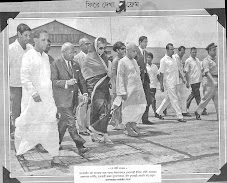



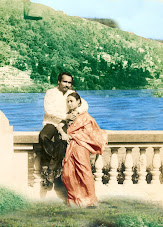






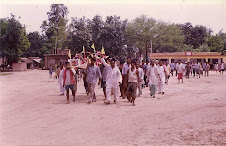

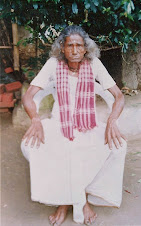
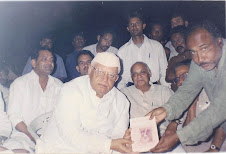
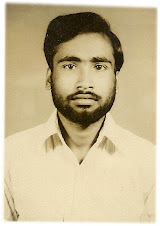



No comments:
Post a Comment